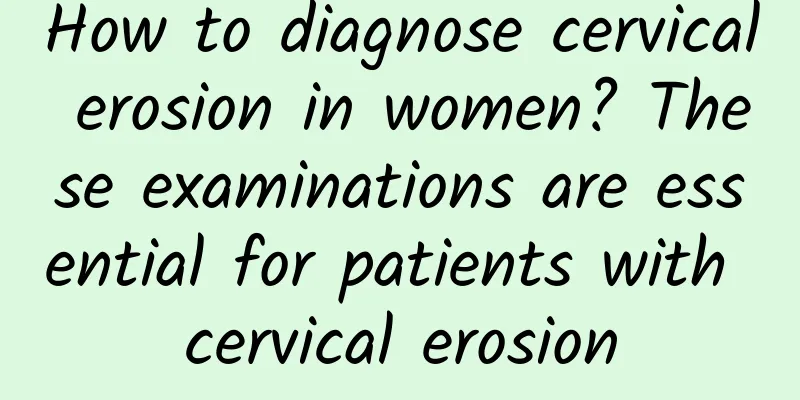Effective methods for detecting Bartholinitis

|
Bartholinitis is a common external genital disease in women. People often know that this disease is an infectious disease, but they do not pay special attention to the relationship between this disease and sexually transmitted diseases. For some people with long-term treatment of Bartholinitis, they do not undergo sexually transmitted disease examinations, delaying the best time for treatment. Checking and confirming Bartholinitis is of great reference significance for correct treatment. Below, the editor will introduce you to the effective method of detecting Bartholinitis. 1. Microscopic examination of secretions or puncture fluid (1) Specimen collection: In patients with Bartholinitis, secretions are usually collected from the Bartholin gland opening, urethral orifice, and paraurethral glands. In patients with Bartholin gland abscess or cyst, puncture fluid can be extracted aseptically. (2) Examination method: Smear the secretions or puncture fluid, and after Gram staining, check for the presence of bacteria under an oil microscope and observe the morphology and staining characteristics of the bacteria. (3) Clinical diagnostic significance and evaluation: 1) Pus is drawn out from an abscess, while mucus is drawn out from a cyst. 2) After Gram staining of the secretions or pus smear of Bartholin's glanditis, bacteria can usually be found under a microscope, and a preliminary diagnosis of the pathogen can be made based on the bacterial morphology and Gram staining characteristics. 2. Bacterial culture of secretions or puncture fluid (1) Inspection method: 1) Isolation and culture of common bacteria: Aseptically collect the secretions of Bartholin's gland inflammation or the puncture fluid of Bartholin's gland abscess or cyst, inoculate them on blood agar plates in zones and streak them, place them in an incubator at 35"C for 18-24 hours, and observe the growth of bacteria. If there is only one bacterium, conduct identification test directly. If there are two or more bacteria, separate and purify them, and then conduct systematic biochemical identification to determine the species. 2) Isolation and culture of gonococci: Aseptically collect the secretions of Bartholin's gland inflammation or the puncture fluid of Bartholin's gland abscess or cyst and inoculate it on a gonococcal plate (TM culture medium), place it in an incubator at 35°C with 5% CO2 for 24 to 72 hours, and observe the growth of bacteria. If bacteria grow, determine the species through smear staining microscopy, oxidase test and other biochemical identification. 3) Pathogen drug sensitivity test: Use paper diffusion method or dilution method for detection, judge the results according to CLSI standards, and report the results to the clinic as S, I, and R. Those using the dilution method will also report the MIC value. (2) Clinical diagnostic significance and evaluation: 1) Pathogens such as Staphylococcus, Streptococcus, Escherichia coli, Pseudomonas aeruginosa, and Neisseria gonorrhoeae can usually be isolated and cultured from specimens of Bartholinitis and Bartholin's abscess. 2) The results of pathogen susceptibility testing can guide the clinical selection of antimicrobial drugs. The above is an introduction to effective methods for detecting Bartholinitis. I hope it will be helpful to you. |
<<: What are the examination items for Bartholinitis?
Recommend
Can abortion be done on the same day? Five common questions for women after abortion
Painless abortion is an option for many women aft...
Avoid sweets when losing weight? Homemade 2 low-calorie desserts to satisfy your cravings
★Chia seeds and fresh fruit drink When you are cr...
How to resist dysmenorrhea during menstruation?
Dysmenorrhea is a common disease in life. In fact...
What if the menstrual flow is too little?
What if my menstrual flow is too little? Insuffic...
What is adenomyosis and what causes it
Adenomyosis is the most common gynecological dise...
The Line Between Beauty and Ugliness: Autologous Fat Transplantation (Part 2)
Although the prospects for autologous fat transpl...
A detailed description of the series of items for examining patients with pelvic inflammatory disease
In recent years, with the gradual increase in the...
What are the causes of menstrual disorders?
What are the causes of menstrual disorders? Due t...
Anti-American beef voices are boiling, and the fan group will launch a protest
After the Ma government "planned" to op...
What is premature ovarian failure
Premature ovarian failure is a complex disease wh...
Let you learn more about the early symptoms of chronic pelvic inflammatory disease
Pelvic inflammatory disease is already a common d...
Do multiple abortions lead to endometrial hyperplasia? How can women prevent endometrial hyperplasia?
Endometrial hyperplasia is mainly caused by repea...
Introduction to the three main methods of treating adnexitis
The choice of treatment for adnexitis is very imp...
Seven common methods to prevent cervical erosion
Among many gynecological diseases, cervical erosi...
What is the normal value of Down syndrome screening ue3?
The normal value of Down syndrome screening ue3 i...









